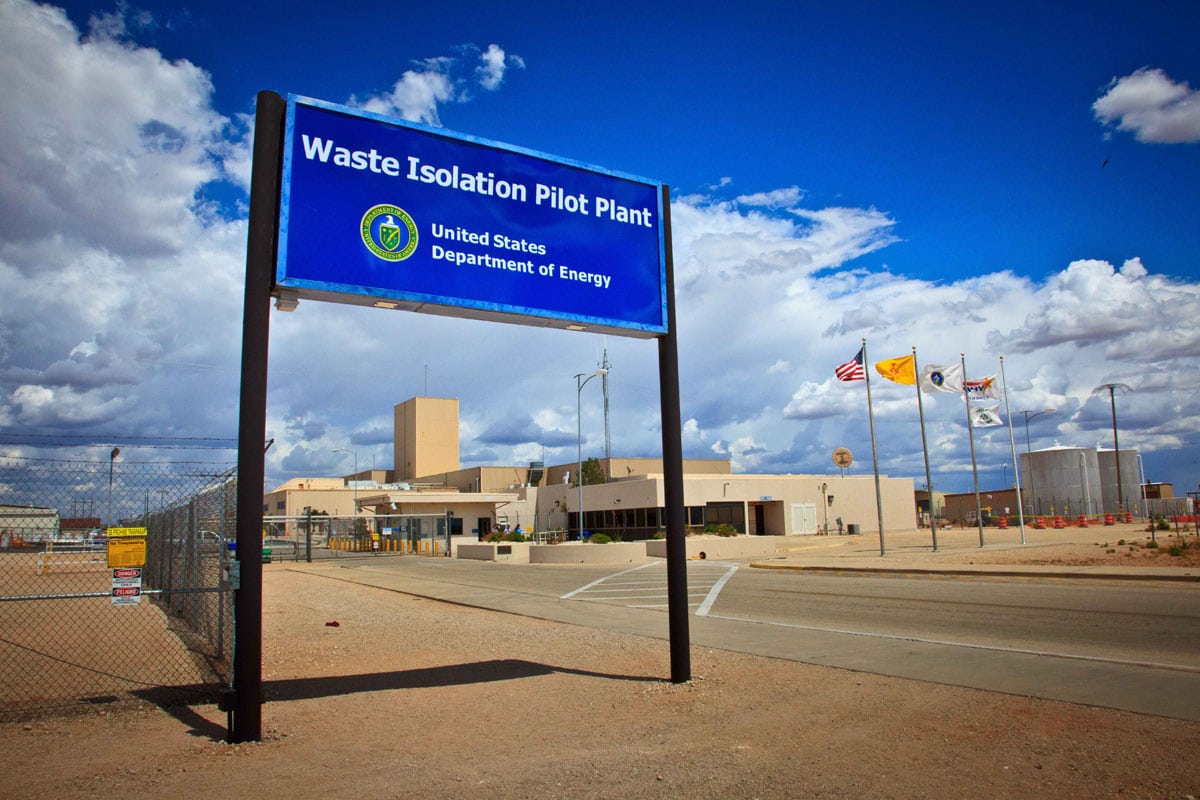
The Senate Appropriations Committee wants the Energy Department’s Waste Isolation Pilot Plant (WIPP) in New Mexico to start planning for accommodating 34 metric tons of processed plutonium that was supposed to be converted into nuclear reactor fuel at the Mixed Oxide Fuel Fabrication Facility (MFFF) in South Carolina.
Energy Secretary Perry officially canceled the MOX project on May 10 in favor of converting the unfinished facility into a nuclear-warhead core production plant and diluting the surplus plutonium for disposal at WIPP.
The Senate panel’s fiscal 2019 energy and water bill, passed last week, supports the aim of killing off the over-budget and behind-schedule MFFF.
In the detailed report for its bill, the committee instructed DOE’s Carlsbad Field Office to by next February file a report to the House and Senate Appropriations panels outlining the permits, legislative measures, and physical changes at the disposal site necessary to carry out the new DOE plan. The report would also address potential funding needs for the physical expansion of WIPP, such as planning for additional salt mining panels for waste emplacement, along with any necessary scientific and technical reviews.
“Every year somebody wants to put new nuclear waste and a new nuclear waste stream into WIPP,” Sen. Tom Udall (D-N.M.) told the other members the Senate Appropriations Committee on May 25. The New Mexico Democrat said DOE must engage in “real negotiations” with his state before sending the plutonium waste from the canceled MOX project.
Rep. Steve Pearce (R-N.M.), who represents the area around Carlsbad, is open to the idea of taking the diluted waste from South Carolina. “As I have stated in the past, WIPP has the technical ability, qualified workforce, and community support needed to accept any and all waste streams that meet its waste acceptance criteria,” the lawmaker said in an emailed statement Friday.
The Senate Appropriations bill would provide $220 million to close out construction of the MFFF. Senate Majority Leader Mitch McConnell (R-Ky.) has indicated the legislation could get a floor vote as early as this month.
Approval would likely put the Senate at odds with the House. The House Appropriations energy and water measure includes $335 million to continue construction. Resolution would likely need to be hashed out in a conference committee.
MOX defender Sen. Lindsey Graham (R-S.C.) has successfully introduced an amendment to the Senate version of the fiscal 2019 National Defense Authorization Act (NDAA), which would block DOE from canceling the project. The Graham proposal was approved by the full Senate Armed Services Committee, which passed the policy bill last week. “The problem with that approach is that it won’t work and the New Mexico delegation in the Senate does not support the material coming to their state,” Graham said in a May 25 news release.
The House Armed Services Committee NDAA opposes termination of the MOX facility.
Canceling MOX faces deep opposition from South Carolina’s congressional delegation and state government – which last week sued to prevent the DOE from halting the project.
Currently, WIPP is limited to disposing of 175,565 cubic meters of transuranic waste, under the 1992 WIPP Land Withdrawal Act. Congressional action would be needed to amend the act to allow for the extra space to accommodate the plutonium, New Mexico Environment Secretary Butch Tongate said recently.
Under the current method of counting the waste underground at WIPP, DOE has already empaneled about 90,000 cubic meters. The New Mexico Environment Department was expected to rule today on a request from the federal agency that would shrink the volume counted to 60,000 cubic meters, by not counting the empty space between drums in a canister.
The result of that ruling was not immediately available at press time.
Even if the new counting method is approved, the amount of TRU waste already destined for WIPP from Energy Department generator sites would fill its limited space.